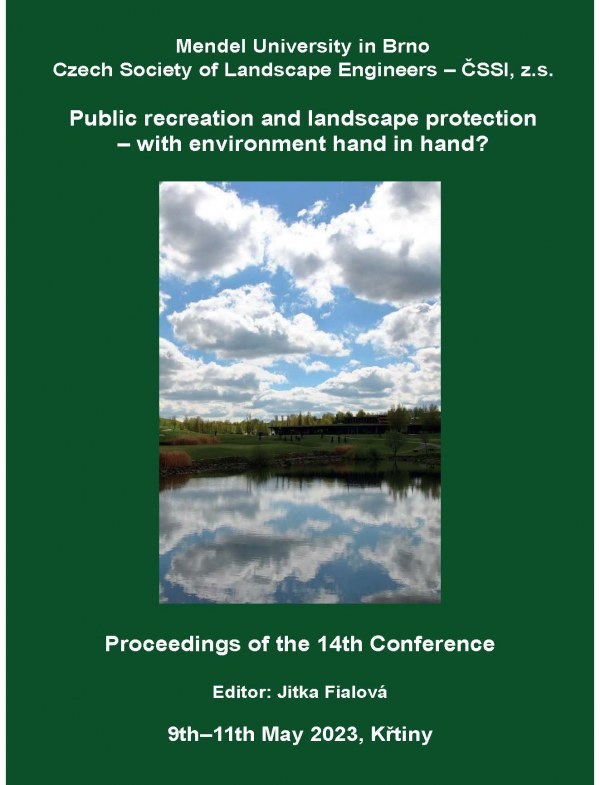
DOI: 10.11118/978-80-7509-904-4-0045
ERGONOMIC APPROACH IN TOURISM FOR VISITORS WITH SPECIAL NEEDS
- Eva Abramuszkinová Pavlíková, Osman Nuri Özdogan, Cihan Yilmaz
The number of people with disabilities has been increasing as a result of ageing population, chronic health diseases and environmental factors such as accidents, natural disasters or conflicts. Disabled people make valuable part of community and their integration into society reflects the level of human development and public awareness. Social responsibility and human rights legislations support the improvement of tourism conditions for visitors with special needs resulting in hotel industry in accessible tourism policies including transport, accommodation, destinations and attractions appropriately meeting their needs. Ergonomic design should be preventive design. Sustainability is assured by ergonomic premises which are safe, pollution free, hygienic and nonhazardous. In ergonomics applications, functional efficiency privails and individuals are able to live in environment which is safe, convenient and healthy. The cooperation of builders, architects and ergonomics designers is essential. This paper presents results of research in hotel sector in Kusadasi, Turkey. The aim was to determine if the hotel facilities are provided to the disabled people, the perceptions of general guests about the disability and their accommodation in disabled rooms. Semi-structured interviews with hotel’s department managers were conducted in 9 hotels ranked as 4 and 5 star.
Keywords: ergonomy of space, environment, disabled clients, accessible tourism, hotel sector
pages: 45-49, Published: 2023, online: 2023
References
- Ahasan, M. R., Tanya, B. (1999). Ergonomic consequences in the rehabilitation of elderly. In: Straker, L., Pullock, S., Smith, R. (eds.). The 2nd International Virtual Conference on Ergonomics. Available at: http://www.curtin.edu.au/conference/cyberg/ [10.03.2023].
- Ahasan MR (2000). Ergonomics of living environment for the people with special needs. In: Sohn, J. Y. (ed.). Human space time-environment, The 5th International Congress on Physiological Anthropology, pp. 269-277.
- Ahasan, R., Campbell, D., Salmoni, A., Lewko, J. (2001). Ergonomics of living environment for the people with special needs. Journal of Physiological Anthropology and Applied Human Science, 20(3):175-85. DOI: 10.2114/jpa.20.175. PMID: 11499165
 Go to original source...
Go to original source... - Baruch, A. (2017). Open to all: making hotel rooms beautiful and accessible. Availlable at: https://www.linkedin.com/pulse/open-all-making-hotel-rooms-beautiful-accessible-anava-baruch/ [21.02.2023].
- Buhalis, D., Darcy, S. (2011). Accessible Tourism, Concepts and issues. Channel View Publications, Canada.
 Go to original source...
Go to original source... - Czaja, S. J., Nair, N. W. (1992). Difficulties encountered by older adults in performance of everyday activities. In: Kumar, S. (ed.). International Journal of Industrial Ergonomics. Safety, IV, 1111-1117
- Darcy, S., Taylor, T. (2009). Disability citizenship: an Australian human rights analysis of the cultural industries. Leisure Studies, 28(4), 419-441.
 Go to original source...
Go to original source... - Darcy, S., Pegg, S. (2011). Towards Strategic Intent: Perceptions of Disability Service Provision Amongst Hotel Accommodation Sector Managers. Available at: https://opus.lib.uts.edu.au/bitstream/10453/17439/1/2010004164.pdf [22.02.2023].
- Design for independence. Available at: https://designforindependence.co.uk/making-hotelrooms-accessible/ [21.02.2023].
- Haigh, R. (1993). The ageing process: a challenge for design. Applied Ergonomics, 24 (1): 9-14.
 Go to original source...
Go to original source... - International Labour Organisation. (1996). Ergonomic checkpoints: practical and easy to implement solutions for improving safety, health and working conditions. Geneva, Switzerland
- Kumar, S. (1992). Rehabilitation: an ergonomic dimension. International Journal of Industrial Ergonomics, 9: 97-108
 Go to original source...
Go to original source... - Pehlivanoğlu, B. (2012). Konaklama Yapilarinin Engellilere Yönelik Oda Düzenlemelerinin İrdelenmesi. İnönü Üniversitesi Sanat ve Tasarim Dergisi, 2(4), 27-35.
- Philippen, D. P. (1994). Housing, information, communication and mobility. In: Kivelä, S.-L., Koski, K., Rietsema, J. (eds.). A paper presented in the postgraduate course on gerontechnology (7-8 Nov), University of Oulu, Finland.
- Smith, D. B. D. (1990). Human Factors and Aging: An Overview of Research Needs and Application Opportunities. Human Factors, 32(5), 509-526. DOI: https://doi.org/10.1177/001872089003200502
 Go to original source...
Go to original source... - Souček, J., Špulák, O., Leugner, J., Pulkrab, K., Sloup, R., Jurásek, A., Martiník, A. (2016). Dvoufázová obnova lesa na kalamitních holinách s využitím přípravných dřevin - certifikovaná metodika, Lesnický průvodce 10/2019. Strnady, VÚLHM, 35 s.
- Tinetti, M. E., Speechley, M., Ginter, S. F. (1988). Risk factors for fall among elderly persons living in the community. The New England Journal of Medicine, 319(26): 1701-1707
 Go to original source...
Go to original source... - Wazzan, W. (2015). My Accessible Room is not Accessible, Applying Human Factors: Principals to Enhance the Accessibility of Hotel Rooms, 6th International Conference on Applied Human Factors and Ergonomics (AHFE 2015) and the Affiliated Conferences, AHFE 2015, Procedia Manufacturing, 3, 5405-5410.
 Go to original source...
Go to original source... - WHO. (2022). Disability. Available at: https://www.who.int/news-room/factsheets/detail/disability-and-health [12.01.2023].
- Yau, M. K. S., McKercher, B. and Packer, T. L. (2004). Traveling With a Disability: More Than an Access İssue", Annals of Tourism Research, 31(4), 946-960.
 Go to original source...
Go to original source...


